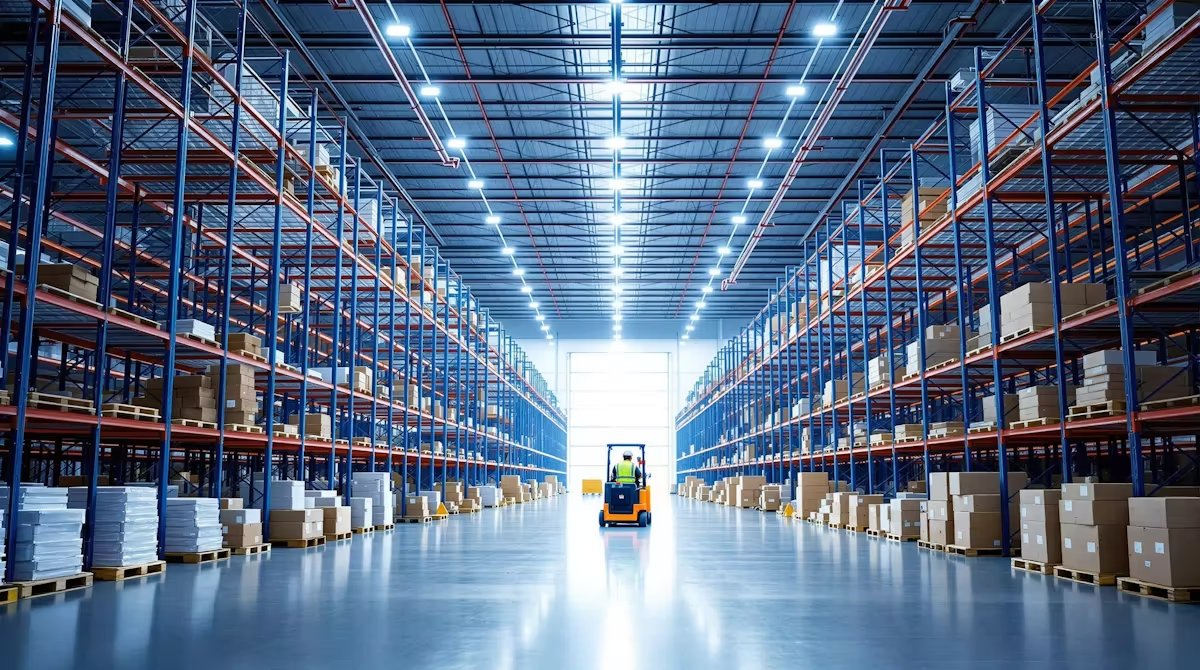Remember that moment when your Shopify store worked like a dream? Everything was simple, clear, fast. Until the number of orders jumped 300%, customers started asking about cart personalization, and you... start to wonder if standard Shopify is still “shipping”.
You're not alone. It is at such a moment that many owners of dynamically growing e-commerce stores begin to hear the name: Shopify Plus.
This is not a “pro” version. This is a whole new level of opportunity — for those who already know they want more. And they need a system that not only keeps up with growth, but drives it.
What exactly does Shopify Plus give? Is it worth paying more? And when does that “more” actually pay off?
Let's start from the beginning.
What exactly is Shopify Plus?
Shopify Plus It's not a “better Shopify.” It's a personal league. Designed for companies that don't just sell online — they already scale sales, handle huge volumes of orders and need a tool that will give them full control. No limits.
It's a platform for large and fast-growing e-commerce stores — those that:
- have several (or more than a dozen) language and currency versions,
- sell in multiple markets at the same time,
- implement their own loyalty programs, automations and unusual order processes.
In practice? Shopify Plus gives you access to powerful features you won't find in basic Shopify plans — such as:
- full customization of checkouts,
- Extensive process automation (e.g. Shopify Flow, Launchpad)
- managing multiple stores from a single panel,
- technical support with a personal supervisor (the so-called Merchant Success Manager).
And most importantly: Shopify Plus does not brake Your growth rate. You can sell millions of products, have hundreds of thousands of visitors a day, and still run smoothly, without having to rebuild your entire infrastructure.

Shopify vs Shopify Plus: Checkout on your terms (but with new rules)
For years, one of Shopify Plus's biggest advantages was the ability to edit checkout thanks to access to the checkout.liquid file. It allowed you to create truly customized shopping experiences — from additional fields to discount rules and layout changes.
But that time is coming to an end.
Shopify has officially announced that it will discontinue support for checkout.liquid. As of August 28, 2025, it will no longer be supported for the “Thank you” and “Order status” pages, and before that, it will disappear from the main steps of the order: information, delivery, and payment. This is part of a larger change aimed at standardizing and securing the shopping process across the platform.
Does this mean that checkout can no longer be customized?
No. Shopify is introducing Checkout Extensions instead – a new, more secure and scalable method of extending checkout. You can add components, business logic, integrations – but you do so through extensions, not by tinkering with HTML/Liquid code.
Additionally, Shopify Scripts (i.e., advanced rules for pricing, promotions, and delivery) will continue to work until the end of June 2026. But it's already worth planning your migration to the new approach—especially since Extensions allow you to achieve similar results and are supported in the long term.
In short: Shopify Plus still gives you an advantage in checkout personalization, but the way you do it is changing. Less “hacking,” more official tools — and better preparation for the future.
Automations in Shopify Plus: Your store on autopilot
Regular Shopify allows you to sell. Shopify Plus — manage sales at the operational level.
The built-in automation tools in Shopify Plus are more than just a nice addition. These are systems that can replace the customer service department, marketing and even part of logistics.
Here are the 3 most important of them:
1. Shopify Flow Automate everything you can
This is an if-this-then-that tool that allows you to build your own machines without writing code. Literally: if a customer bought X, do Y.
Examples:
- The customer bought for the third time? Give it a “VIP” tag and assign it to the loyalty campaign.
- Less than 10 pieces of product left in stock? Mark it as “Recent pieces” on the page.
- Someone placed an order above 1000 PLN? Send a notification to sales and create a reminder in Slack.
It is a tool that does its job in the background — without errors, 24/7. And what is important, its operation does not burden the store.
2. Launchpad — your automated Black Friday
Don't want to get up at 5am to click “start” the campaign? With Launchpad you don't have to.
It is a panel for planning and launching marketing events — flash sales, seasonal sales, product launches. You can set:
- the exact start and end time of the promotion,
- price changes,
- activation of specific banners, pop-ups, page layouts,
- Segmentation of the customers to whom the offer is intended.
And everything will return to normal automatically, without your participation.
3. Functions — tailor-made automations
For teams with developer access, Shopify Functions is gold. It allows you to create your own rules of shopping cart, payment, shipping, promotion — deeply integrated into the backend of the store.
That is: no longer just simple “if... then...”, but full-fledged algorithms that can, for example, change the way delivery costs are calculated depending on the contents of the cart or create custom discount rules only for selected customers.
It's a tool for larger stores that have a specific vision of the shopping experience and want technology to reflect that.
Shopify vs Shopify Plus: Multi‑Store and support at a premium
Running an online store in a single market is a challenge. But when you start selling in several countries at the same time — with different currencies, languages, taxes and teams — the real logistics begin.
In standard Shopify, each new store is a separate account, a separate setup, a separate payment. Mastering this on a larger scale can be simply overwhelming.
Shopify Plus solves this in two ways:
- Multi‑Store from a single panel
Shopify Plus lets you manage up to ten independent stores in a single contract. This means that you can drive:- separate versions of the store for each country,
- separate B2B and B2C store,
- separate brandies within a single ecosystem.
- Dedicated support that acts as a partner
Stores running on Shopify Plus are not left to fend for themselves. You get access to priority support, as well as a personal supervisor (the so-called success manager) who knows your store, goals and development plan. - This is no longer a classic contact form with a waiting time of 48h. This is a specific person with whom you can go through migration, implementation of changes and even a promotional campaign. It acts as an extension of your tech/IT team.
Real-life example: how Shopify Plus helps manage a global brand
Imagine a brand that started locally for example, with streetwear fashion in Poland. Within two years, it gained a huge following on Instagram and began shipping packages to Germany, the UK, and the US. The problem? Each market has different expectations: delivery methods, currencies, languages, even different promotions.
On classic Shopify, they would have to create separate accounts, panel by panel. On Shopify Plus? They have one main admin panel and 10 independent stores, integrated with a single warehouse and CRM system.
It's not just convenience, it's time savings, data unification, and easier management of an international business.
And when the payment gateway API crisis hit the UK? Their Merchant Success Manager was already on Shopify's side before the team had time to write an email to support.
Technological openness: Shopify Plus under your rules
For many e-commerce companies, technological constraints are the biggest brake on growth. Standard Shopify is a great tool to get started, fast, secure, ready to go virtually right away. But when your team starts talking about ERP integrations, custom cart functions, headless commerce or PWA — suddenly it gets tight.
Shopify Plus gives you access to a completely different set of tools. This is not about additives. It's all about infrastructurethat keeps up with your strategy.
Advanced API — no bottlenecks
With Plus plans, you get much higher API query limits — up to ten times higher than the standard. This is absolutely crucial if:
- you have applications for product or inventory management,
- you integrate with an ERP system (e.g. Comarch, Subiekt, SAP),
- you use non-standard loyalty, payment or marketing automation solutions.
Thanks to this, the data flows smoothly — and the store operates quickly, even with heavy traffic.
Headless commerce — when the frontend rules its own
Shopify Plus supports the headless model — separating the frontend layer (i.e. what the customer sees) from the backend (i.e. the store engine).
What does that mean? You can build your own user interface — in React, Vue, or even as a mobile app — and still use Shopify's engine to manage orders, products, or customers.
This is a huge advantage in companies that want to:
- have full control over the design and speed of the site,
- Implement unique shopping experiences (e.g. product configurators, interactive catalogs)
- test different versions of the UI without the risk of disrupting the operation of the store.
In short: Shopify Plus gives you freedom, but it doesn't leave you alone with the documentation. In addition to the advanced GraphQL API, you have access to webhooks, security tokens, developer sandboxes, and a tech team that actually knows what they're doing.
Shopify Plus and B2B: Wholesale without patching the system
In standard Shopify, B2B sales look a bit like trying to make a wholesaler out of a home store. Can you? You can. But it requires combining with applications, hidden prices, discount codes, collection passwords...
In Shopify Plus, all of this is solved systemically — you have access to built-in B2B module, which runs in parallel with your standard retail sales.
Separate price lists, terms and access — all in one panel
Every B2B customer can have:
- individual price list (e.g. percentage discounts, net prices),
- your own payment method (e.g. transfer with deferred payment),
- access to selected products that are not visible to the public
- Assignment to a specific sales representative on your team.
So you don't need two platforms — Shopify Plus lets you retail and wholesale from the same backend, without diverging stocks and synchronization problems.
B2B portal without coding
In Shopify Plus, you can create a separate portal for wholesale customers — with a dedicated order panel, visibility only for registered partners, and full automation. No need to build a custom solution — everything is already in place.
For example, you can:
- allow wholesale partners to place recurring orders,
- provide them with PDFs with invoices, purchase history, commercial documents,
- integrate the warehouse with the ERP system and set up automatic order approval.
This is a solution that until recently was reserved for corporate giants - now you have it at hand.
How much does Shopify Plus cost? And what do you get for this money?
No surprise here — Shopify Plus is a platform for large stores, and so is its price. We're talking amounts that go beyond the standard Shopify plans ($39-$399 per month).
Minimum: $2,000 per month
This is the base rate that Shopify Plus starts with. But... this is not a rigid subscription like in the standard versions. The price can be set individually — depending on your sales, technical requirements, number of storefronts, integration, business model. As Shopify itself states — usually as part of an annual contract (e.g. $2500/mo with a contract for one year or $2300/month with a 3-year commitment)
For very large brands, Shopify offers percentage model — e.g. 0.25% of the monthly turnover, with a certain maximum limit (e.g. $40,000). Thanks to this, stores with a gigantic volume of transactions do not pay “from the ceiling”, but in proportion to the scale of the activity.
What is included in this price?
Many companies only look at the amount and compare it to the Advanced plan ($399). It's like comparing a motorcycle to a small van — both have an engine, but serve completely different purposes.
For $2000+ per month on Shopify Plus, you get:
- access to Checkout Extensions and cart personalization,
- Shopify Flow, Launchpad, Functions — automations that can replace the work of the entire team,
- B2B sales in the native module, without separate tools,
- up to 10 stores under one contract,
- Enterprise-level APIs — no limits that frustrate on a larger scale
- Priority support, personal caregiver and full onboarding,
- the ability to operate in a headless commerce model, with its own frontend.
This is not a “per shop” price. it investment in sales infrastructure, which allows you to grow, automate and handle thousands of orders a day without clogging up your team.
Implementing Shopify Plus doesn't have to mean a months-long project an experienced Shopify agency can help you do it in stages, taking into account your business model and the integrations you already have in place.
Is Shopify Plus worth it? When does it make sense?
Shopify Plus is not for everyone. And thankfully. Not every company needs enterprise-class solutions. If you run a small store, operate locally and don't need more customization or integration, classic Shopify will still be a great choice. No unnecessary costs, no complications.
But there comes a time when you stop keeping up. There are so many orders that your team begins to operate on the verge of chaos. Customers from different countries have different expectations, and the payment system or delivery method must be different for each of them. You try to embrace it on a standard plan and at some point you feel like driving a truck on an engine from a scooter.
Then Shopify Plus starts to make sense.
Because it's not just a tool for big brands. It's a solution for those who are growing — and know they want to keep growing. For those who no longer want to patch systems with middlemen, just have a stable, scalable and reliable backend to run serious e-commerce.
Shopify Plus will not solve all problems. But it can take off your shoulders what technically shouldn't be an issue anymore — and leave you room for decisions that really grow the business.
In conclusion
Shopify Plus is not an upgrade out of curiosity. It is a conscious decision that it is time to stop working on what was enough “for the beginning” and switch to a system that realistically supports growth. Scaling an e-commerce business requires more than just a good product and a nice website. You need to have a backend that works quickly, securely, and exactly as you need it.
If you feel like your current platform is starting to be a limitation rather than a support — it's worth taking a look around. Perhaps this is the moment when Shopify Plus stops being a “solution for the big ones” and becomes the natural next step for you.
The rest is a business decision.



